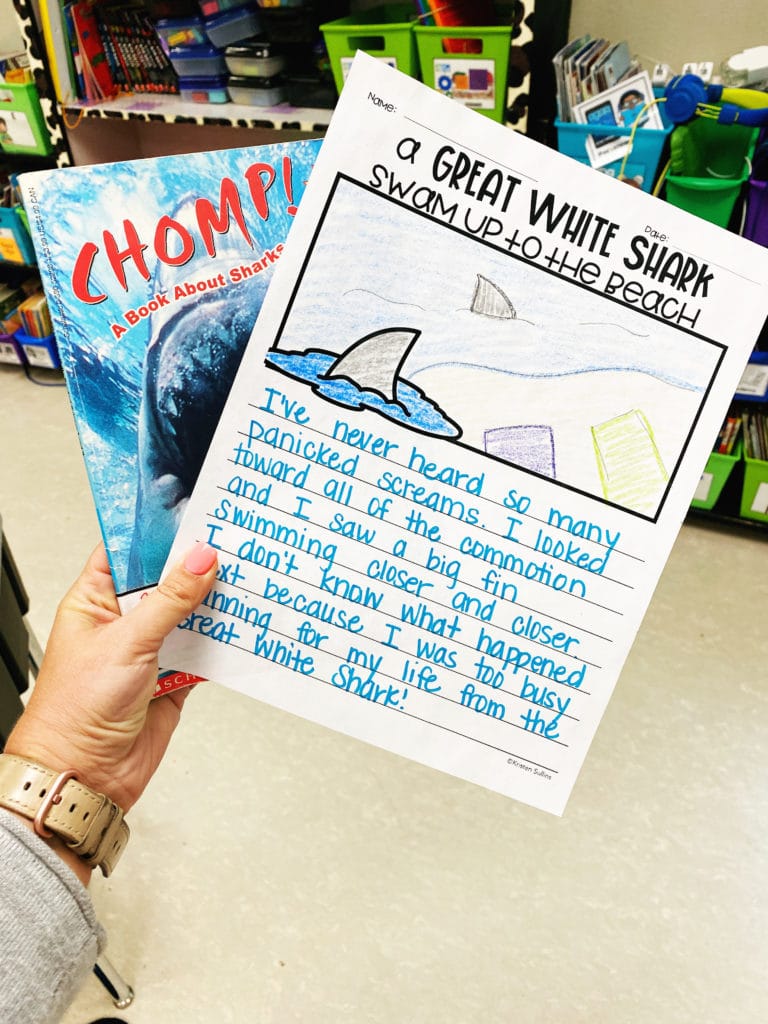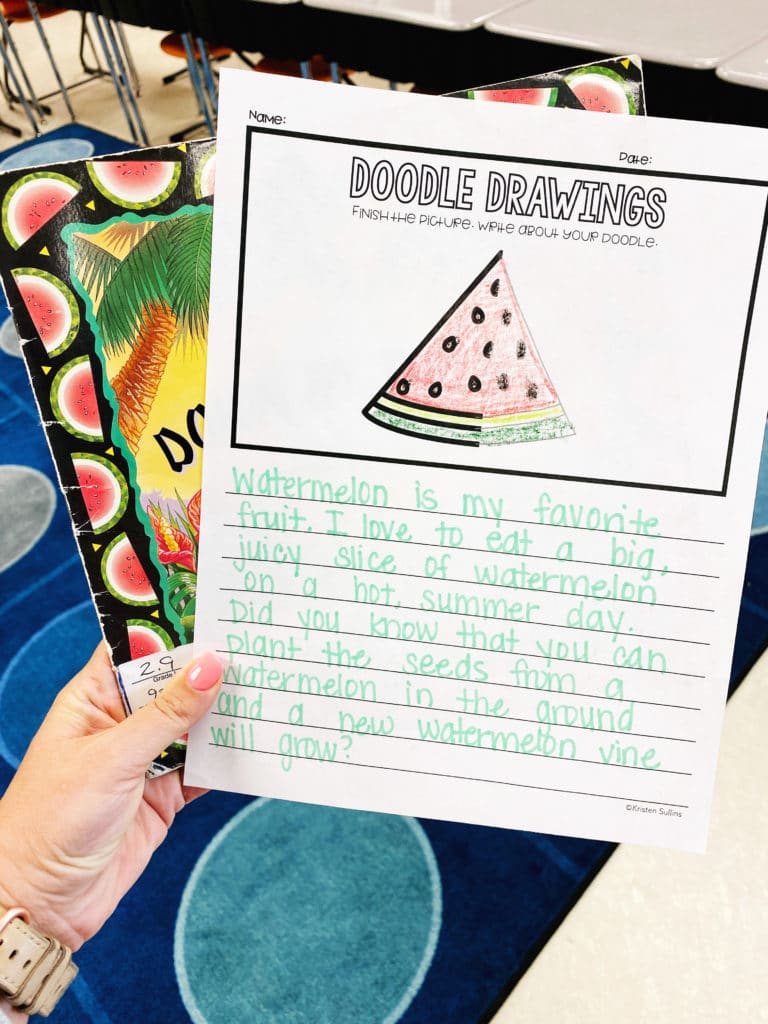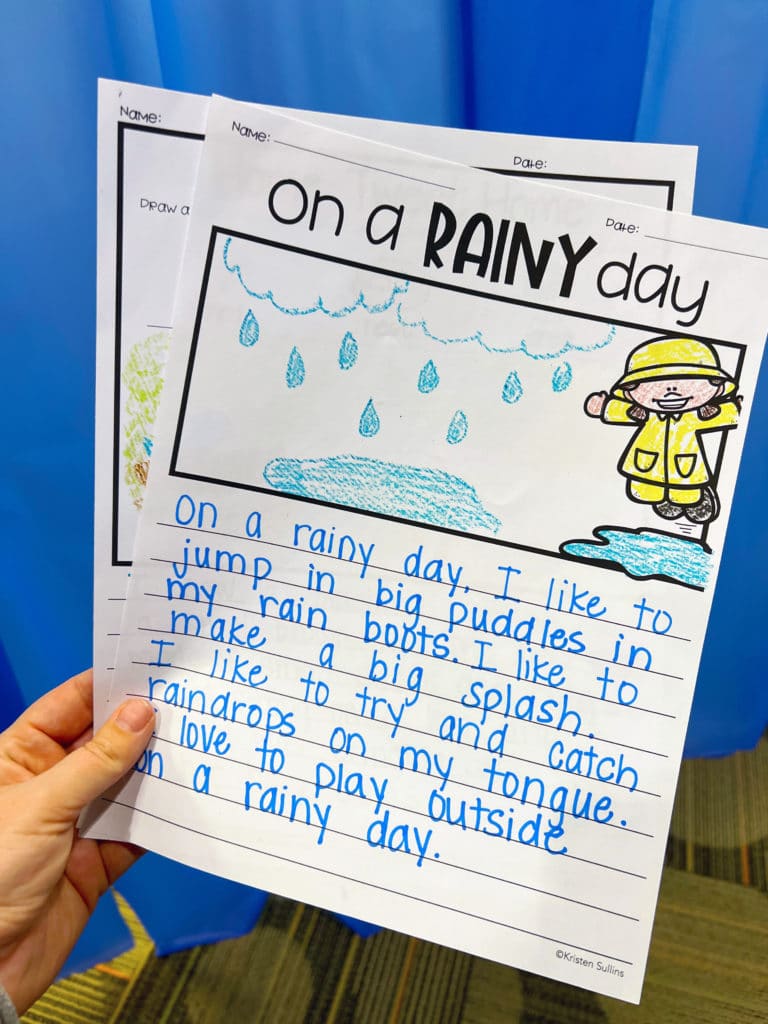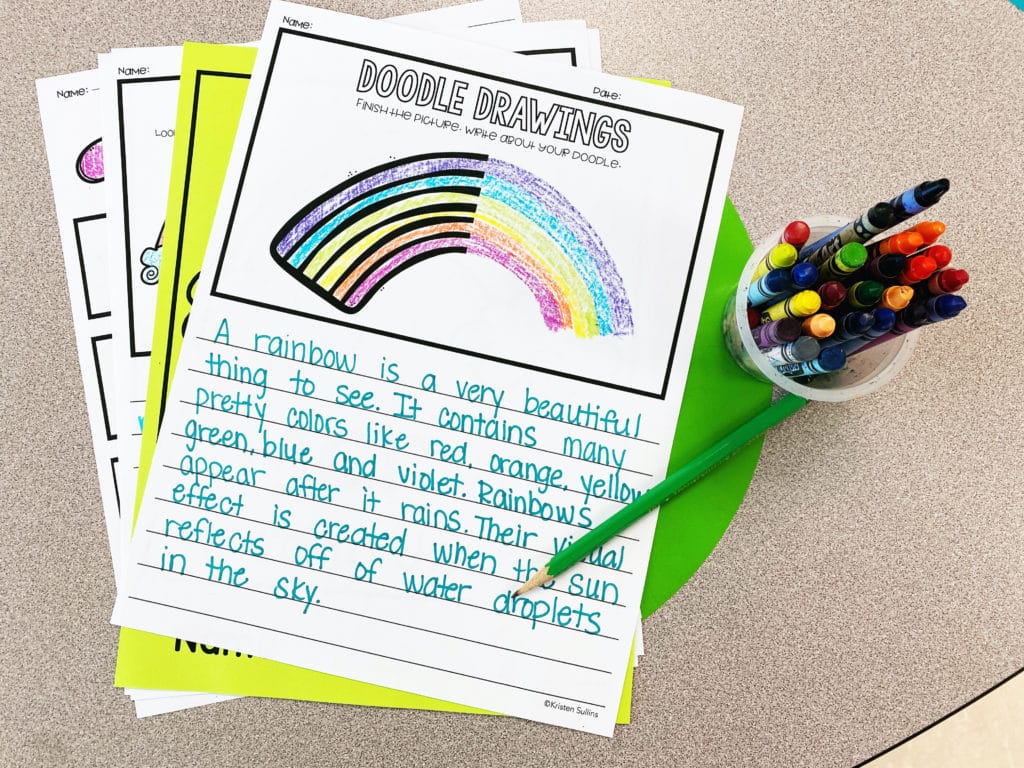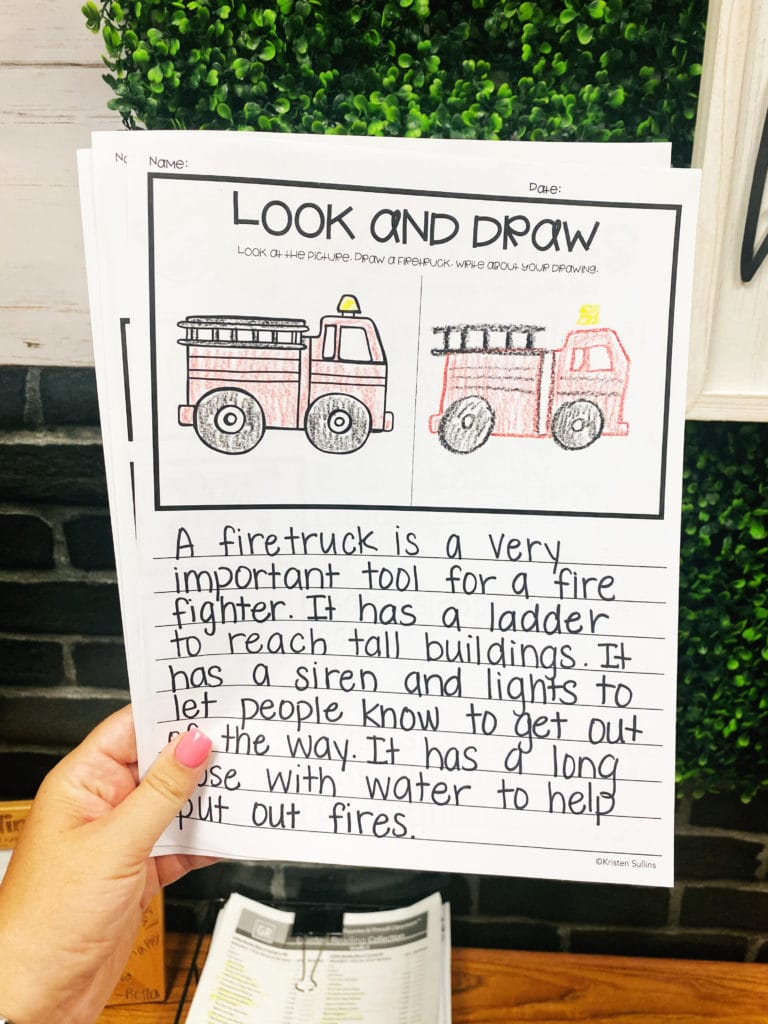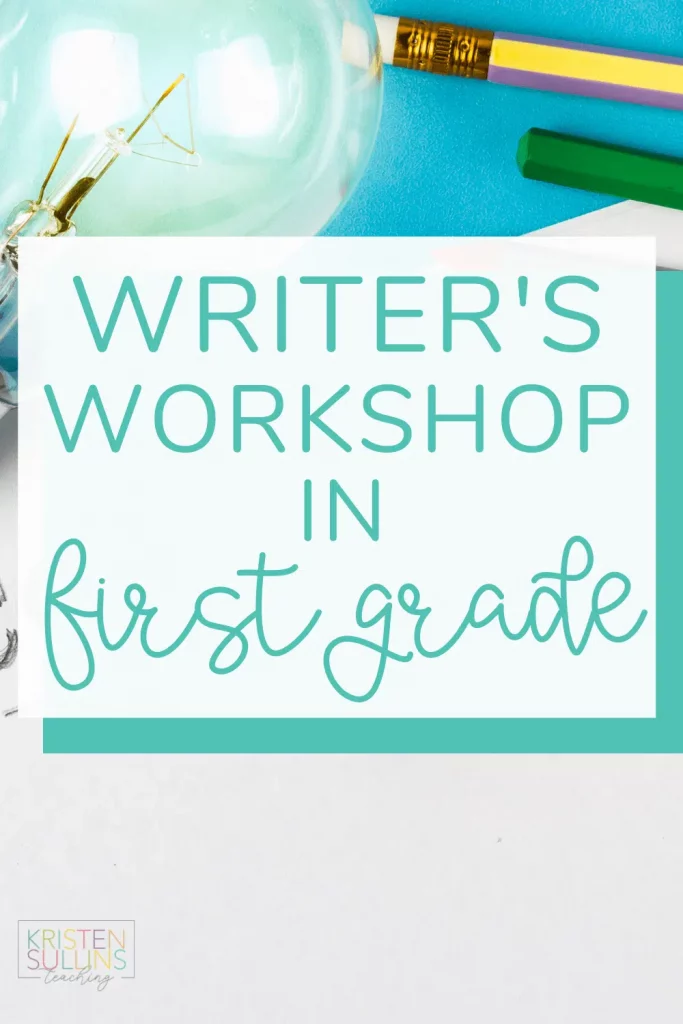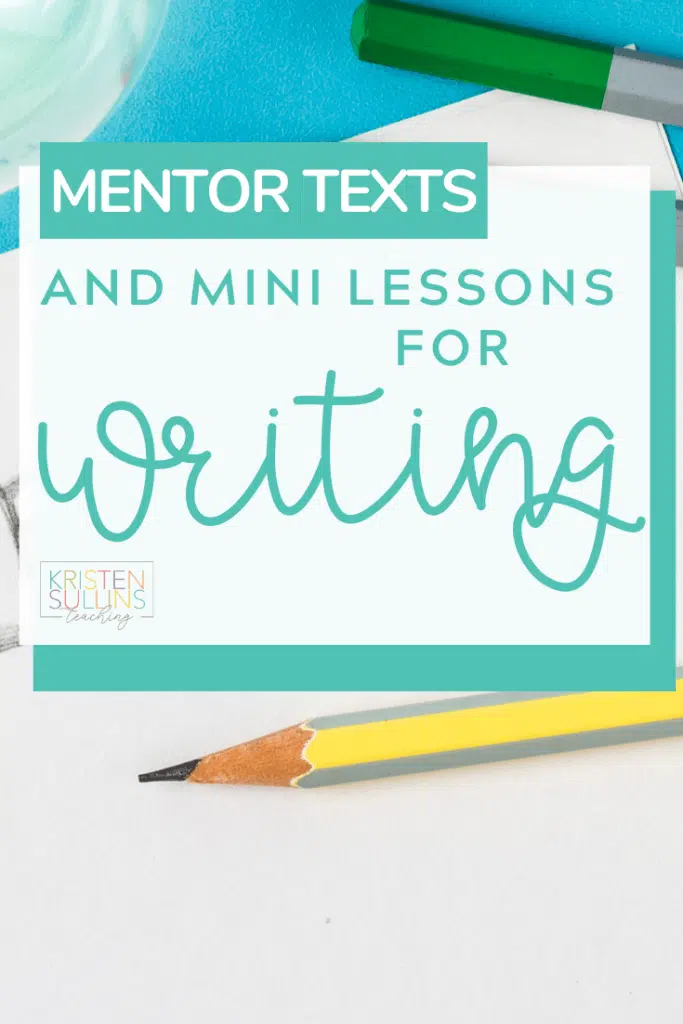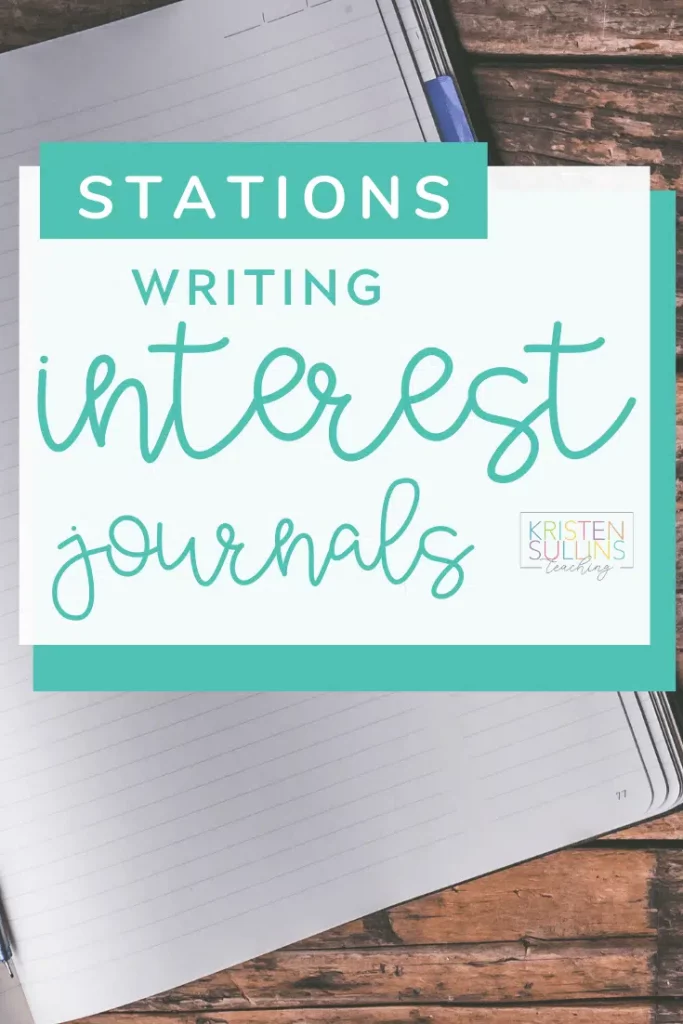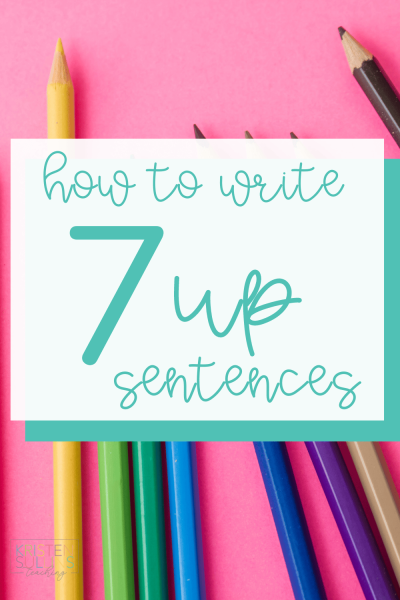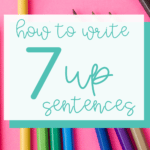Have you ever wondered wish there was a magic wand that you could simply wave to improve your first grade students’ writing?
Picture this… it’s nearing the end of the year and you are feeling all sorts of emotions.
Joy.
Sadness.
The panic in your chest when you feel like…
“THEY'RE NOT READY YET!”
“IT'S NOT GOOD ENOUGH YET!”
“NEXT YEAR'S TEACHER IS GOING TO THINK I'M TERRIBLE!”
At least that's how I start to feel when I think about my student's writing.
I start thinking things like…
- Are they really ready for second grade writing?
- What can I really do at this point? We only have a few weeks left!!
But it doesn’t have to be this way.
Writing, in most first grade teachers’ opinions, is one of the hardest subjects to teach out of our entire day.
The problem with writing is that it’s not black and white like math problems or sounding out a word.
Writing can seem too abstract to teach first graders. But here’s a secret… it doesn’t have to be.
Today I’m sharing one of my favorite (and easiest) tips for teaching my first grade students how to write better, more descriptive sentences.
If you start with a foundation of strong, descriptive sentences you can easily transfer those skills to story and informational writing as well.
Keep reading this blog post to find out my easiest and most effective writing tip for first grade students.

7 Up Sentence Writing for First Grade
Here's a trick that will beef up your students' writing with just 7 WORDS:
Teach your students how to write a 7-Up Sentence.
A 7-Up sentence has….
wait for it…
7 WORDS!
And I don't mean words like “I love it so so so so much”.
A 7-Up sentence has good, descriptive words like:
“The brown cow was eating tall grass.”
The really great thing about this strategy… you can use it on literally ANYTHING!
This tip is easy to teach. It will literally take you less than 10 minutes. Then, as you are holding one on one or even small group writing conferences, then you can refer back to it. You can also use it as a challenge to your students by saying things like “Okay friends, today I want to see at least two seven up sentences in your story”.
You can also go more advanced and issue a challenge similar to “Today I challenge you to write a 7 up sentence on the first page of your story that describes the internal characteristics of your character”.
What I love most about this writing tip is that it works for writers of all abilities because you can use the same strategy for every first grade student, but set different expectations for your different levels of writers.
Where do you start with 7 Up Sentence Writing?
Okay, I know you may be thinking this sounds like a great writing strategy for first grade students, but I’m not quite sure how to make it work in my own classroom.
Here's a few ideas of how I have used the 7 up writing strategy in my own first grade classroom:
- Have students draw a picture and write a 7-Up sentence about their picture.
- Write about whatever Math, Social Studies or Science unit you are teaching.
- Challenge students to write a 7-Up sentence about a book they just read.
- Your morning work could be to write a 7-Up sentence using certain vocabulary words or sight words!
Not sure where to get started?
Start TOGETHER!
I’ve always believed that modeling is the most effective teaching strategy. So, every year when I introduce this writing strategy to my first graders, we start together.
Share the Pen
We build and write a 7 up sentence together (as a class) on the board. This is the perfect time to “share the pen” and even let students help you write some of the words!
Sentence Stems
You can also have a set of sentence stems or topics and have a student draw a card, then write the 7 up sentence together. If your students are ready for me, have one student draw a sentence stem and students can work individually or in small groups to write a 7 up sentence using that sentence stem or topic and then come back and share. I believe that students really benefit from hearing how their peers responded to the same question/sentence stem. This writing activity also easily lends itself to peer editing and revising.
What's Next in 7 Up Sentence Writing for First Grade?
Okay, so your first grade class has become very comfortable building 7 up sentences together and it’s time to let them go and do it naturally in their own writing.
Most of your students are doing really well, but you have a few that haven’t quite mastered this writing strategy yet.
What’s next?
In order to provide a little more support, you can breakdown the different parts of a 7 up sentence. Almost like an “anatomy of a sentence” lesson.
At this point, students should know that every sentence needs at least one noun and one verb. That’s only two of your seven words. Now we need to learn to be descriptive in the form of adjectives, adverbs and prepositions.
Basically, students need to start thinking about how things look, sound, or feel (adjectives). They also need to tell us how the person/animal did the thing such as quickly, slowly or loudly (adverbs). We also need to know where the subject of the sentence is such as beside the house or in the tree (prepositions).
In my personal opinion, I don’t think students particularly need to name what’s an adverb or adjective, but I do want them to understand that the purpose of those three things is to give their reader a better mental image. I tell my students that they are basically creating a movie for the reader to create in their head and that seems to help!
My Final Advice for Writing in First Grade
I have one last piece of advice for you. I hope you have loved this writing idea and will be able to use it in your classroom and if you do, PLEASE make sure that you are prioritizing it in your stations/centers.
If you really want this skill to become natural for students, then it needs to be in every assignment they do. And stations are no exception.
If you REALLY want to have easy, engaging writing sessions between now and the end of the year…
let me introduce you to Doodle Drawings and Look and Draws!
These are two writing activities that I created when one of my classes was obsessed with How To Draw Books.
I realized that these kinds of activities are super fun and exciting for kids.…
but they also allowed me to sneak in good writing practice!
After Christmas break, my expectations for first grade students are:
- At least 4-5 sentences (hopefully more)
- At least 3 of those sentences must be GOOD, 7-Up sentences
Once the students' writing sample is finished,
THEN they can work on the How-To Draw activity at the top of the page!
You can try these activities out for FREE in my 10 page Writing Sample Pack:
First Grade Writing Stations- Set it and Forget it
A teacher’s dream is to “set it and forget it”… and with this writing bundle, now you can!
This bundle includes the two writing resources I use in my own classroom ALL YEAR LONG that require very little thought and planning but offer countless opportunities for my writers to grow in independence, creativity and author’s craft.

